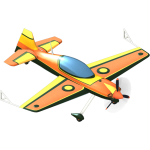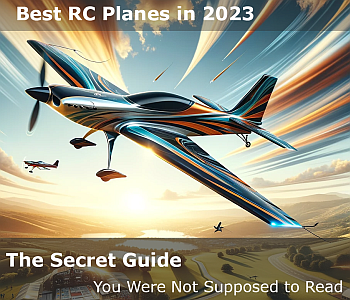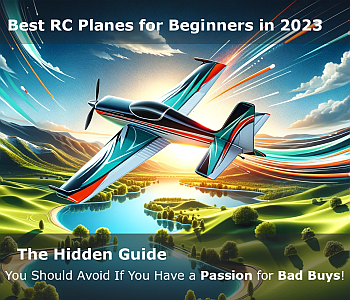Many first-time plane buyers try to start with an advanced plane. Let’s face it, a Mustang P-51D or an Ultimate biplane looks really cool, but your first plane should be intended for a first-time pilot.
best beginner rc plane
best rc airplane for beginners
cheap rc planes for beginners
best rc planes for beginners
best rc plane for beginners
Before anything, here are some key things to have in mind before buying your first RC plane.
Stall Speed
Contents
Every plane has a lower limit of speed where the wing simply stops flying. This is known as the stall speed. Trainers have very slow stall speeds. The low stall speed is due to the flat bottom airfoil shape. When a trainer does stall, it recovers quickly and with little control input from the pilot.
Recover Altitude
Many mistakes a beginner makes causes the plane to change altitude (height above ground) before the plane can recover to level flight. A trainer takes very little altitude to recover because they are stable and tend to right themselves. This stability makes the trainer easier to fly and smoothes out mistakes.
Performance
Because trainers are slower than other aircraft the student pilot has more time to think and react. Trainers are also not very aerobatic; they simply will not do some of the more complicated maneuvers. This keeps a student’s mistakes from turning into out-of-control disasters.
Main Types of RC Airplanes
Kits You Build & Cover Yourself
When you purchase a kit, you’ll get a set of plans for the model, an instruction manual, and all the wood and other materials to build the airframe. Many kit makers today also include hardware package (hinges, pushrods, wheels, etc.). Glue, and covering or paint is not included with the kit. Most beginner and sport aircraft only need simple wood tools to build them because they use balsa wood and plywood construction.
Estimated time to finish: 20 to 50 hours.
Almost-Ready-to-Cover Airplanes
Almost ready to cover (ARC) kits have built airframes that are sanded and ready for final assembly and covering. You can finish an ARC airplane with any type of materials and colors you want, giving it your own style. Just like a kit they will not come with glue or covering.
Estimated time to finish: 8 to 24 hours.
Almost-Ready-to-Fly Airplanes
Almost ready-to-fly (ARF) planes are the most complete form of kit available. The plane will be built, covered, and will come with complete hardware and a detailed instruction manual. Unlike ARFs of yesteryear, ARFs today are built from balsa and plywood, molded plastic, and fiberglass, some are even covered with a regular iron-on covering like Ultracote. ARF planes are absolutely the quickest way to get into the air.
Estimated time to finish: 4-16 hours.
Trainer Airplanes
This style of plane usually has a high-mounted wing with a flat bottom which provides more lift and slower speeds. Most trainers have tricycle landing gear with a single wheel in front which provides easy ground handling and more stable take-offs and landings.
Sport Airplanes
Sport is a word found all around the hobby. Usually, products categorized for “sport use” are designed for intermediate pilots that have built a model before and have some flying experience.
Sport planes usually land slowly and will perform most aerobatic maneuvers. Many sport planes have low-mounted wings (wings are below the fuselage), and they have semi-symmetrical airfoils (both top and bottom surfaces are curved, but the bottom is less curved than the top).
Scale Airplanes
Scale planes are designed to look like “The Real Thing”. A “sport scale” plane will have some slight modifications to the design to maintain its looks but make it easier to fly and build. True scale planes are directed toward the most experienced builder. Their goal is to make the most accurate scale replica of the original full size plane. Usually, this requires hundreds of hours of building time and master craftsman skills.
Aerobatic Airplanes
Many planes of this type are modeled after full-size aircraft (like the Ultimate Biplane or Extra 300). Most are mid-wing or low-wing, have fully symmetrical wings (the airfoil looks the same top and bottom), and have really big rudders for “point” maneuvers and knife edge flight. A special kind of aerobatic plane is known as the “fun-fly”. These planes have a short fuselage, thick, short wings and large control surfaces. Fun fly planes are also very light. This combination makes them very maneuverable, predictable-just a whole lot of fun.



